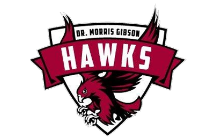Music
Music education at Dr. Gibson begins in kindergarten and continues through to grade 6. As educators, we know that we learn music through experiencing music. At Dr. Gibson School, we encourage creative expression through performance/participation, listening and improvising or composing.
A music specialist, with training in the Orff Approach and the Kodaly Method with Dr. Lois Choksy, teaches music at Dr. Gibson School. The Orff and Kodaly methods are similar in that they both believe singing is the most important aspect of a child’s education. Students are taught nursery rhymes, poetry, chants, folksongs from Canada and other countries and songs composed by famous composers. From each of the poems or songs, the basics to reading, writing and improvising music are taught. This is done through listening, moving, creating, singing, body percussion and playing instruments.
MUSIC INSTRUMENTS AT DR. GIBSON
Singing is the primary instrument but Dr. Gibson has many percussion instruments; including both non-pitched percussion and pitched percussion. Non-pitched instruments are divided into woods, scrapers, shakers, metals and drums. Examples of woods would be claves, rhythm sticks, tone blocks, wood blocks and temple blocks. Scrapers include guiros and tone blocks. Shakers are maracas of many shapes and colors. Metals include triangles, agogoe bells, cymbals and chimes. We have hand drums, including the conga drum, the bongos and 18 djembe drums from West Africa. Pitched instruments are the “barred instruments” which include the xylophones, metallophones, glockenspiels and the contra bass bars. There are 30 barred instruments at Dr. Gibson.
OBJECTIVES OF MUSIC PROGRAM
The teaching objectives of the music program at Dr. Gibson are also the objectives as set out by the Alberta Education Music Curriculum Guide. The objectives are:
- to develop an ability to sing in tune
- to develop an ability to read, write or improvise music
- to play a variety of music instruments for accompaniments and compositions
- to develop self-expression and response to music through creative movement and/or dance
- to develop positive attitudes toward music including the enjoyment of music, an appreciation of self as a performer and composer, acceptance of music in everyday life
MUSICALS
Musicals have a wonderful history at Dr. Gibson as we have performed wonderful shows such as “Cinderella,” “Dig It!” and ”Alice in Oz!” Students in grades 4/5 and 6 are the performers in our musicals. Students perform in all areas of the fine arts; music, art, drama and dance. Therefore some sing and play instruments, some dance and move creatively, some act in dramatic roles and some draw the set for the production. The Orff approach to music education encourages creativity so students compose many of the songs and accompaniments that are played on the instruments. The students create dance and movement also so that their performance will include the singing voice, the instruments and movement (dance) to each song. Musicals are celebrated at our school – they are both challenging for the students, the parent musical committee and the staff so we do not perform one every school year!
EXTRA-CURRICULAR ACTIVITIES
The music program and its’ talented student musicians have helped establish a strong culture at Dr. Morris Gibson School. Extra-curricular activities in music are done at lunch recess to provide the students with extra practice and instruction. These include a Grade 4, 5, and 6 Choir during non-COVID years and a Grade 4, 5, and 6 Xylophone Club. Extra-curricular clubs perform at school assemblies, concerts at off-school venues, or at the Foothills School Division Music Festival. The Grade 4, 5, and 6 Choir wear school vests made from the Alberta tartan that represents the heritage of our school’s namesake, Dr. Morris Gibson. (On a rotational basis, we offer a grade 2/3 Choir and/or a Grade 4, 5, and 6 Drama/Musical Club.)
